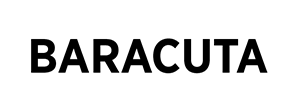
O/1030/24, Baraqah Ltd v G & G Srl, UK IPO, 31st October 2024
TAKE TWO
There can be good reason to argue dual grounds, suggests Maya Muchemwa
KEY POINT
This case provides a reminder of the difference between direct and indirect confusion
MARKS
Applicant’s mark
Applicant’s mark
Opponent’s mark
Opponent’s mark
Baraqah Ltd applied to register BARAQAH in class 25 for “modest clothing, abayas”. G & G Srl (the Opponent) opposed based on its earlier registration for BARACUTA, arguing likelihood of confusion under s5(2)(b) of the Trade Marks Act 1994, relying on goods including: “Clothing; Top clothes; Nightwear; Footwear; Headgear” in class 25. The Opponent argued that the trade marks were highly similar and the goods were “clearly identical”.
On comparison, the marks were deemed visually similar to no more than a medium degree and aurally similar to a medium degree. Conceptually, the marks were deemed neutral. The goods were deemed identical.
On the likelihood of confusion, the UK IPO first acknowledged that there are two types: direct and indirect. Following a global assessment, no likelihood of direct confusion was found. In the IPO’s view, as the distinctiveness of both marks lay in the full mark, the average consumer was unlikely to artificially dissect the BARA- element from them. As a result, there was little chance that consumers would overlook or misremember the endings (-CUTA/-QAH), especially as they are not visually similar and the purchasing process is predominantly visual. In addition, the absence of a conceptual ‘hook’ meant that consumers would not have a strong conceptual message to connect the marks or call them to mind.
“The average consumer was unlikely to artificially dissect the BARA‑ element”
On indirect confusion, the IPO recounted Iain Purvis QC’s explanation in L.A. Sugar Ltd v Back Beat Inc that it “only arises where the consumer has actually recognised that the later mark is different from the earlier mark”.1 So, “It therefore requires a mental process of some kind on the part of the consumer when he or she sees the later mark, which may be conscious or subconscious but, analysed in formal terms, is something along the following lines: ‘The later mark is different from the earlier mark, but also has something in common with it. Taking account of the common element in the context of the later mark as a whole, I conclude that it is another brand of the owner of the earlier mark’.”
The IPO found no indirect confusion, as it saw no reason why (after noting the marks are different) consumers would assume that they come from the same or economically linked undertakings. Consequently, the opposition was unsuccessful.
For practitioners, this is a reminder of the options available in arguing a likelihood of confusion case. If the trade marks are similar to some degree and cover similar or identical goods or services, it is worth arguing both grounds. However, the IPO reiterated that “a finding of likelihood of indirect confusion is not a consolation prize for those who fail to establish a likelihood of direct confusion… there must be a ‘proper basis’ for finding that there was a likelihood of indirect confusion where there is no likelihood of direct confusion”.2 In deciding whether to argue indirect confusion, practitioners should assess and consider factors such as whether consumers could view the marks as ‘natural variants’ of each other or ‘brand extensions’.
1 O/375/10
2 O/219/16, Cheeky Italian Ltd v Sutaria
Maya Muchemwa is a Chartered Trade Mark Attorney at Womble Bond Dickinson
maya.muchemwa@wbd-uk.com
ILLUSTRATION: Shutterstock.com
NEXT CASE COMMENT>
On the straight and narrow
MORE STORIES






















